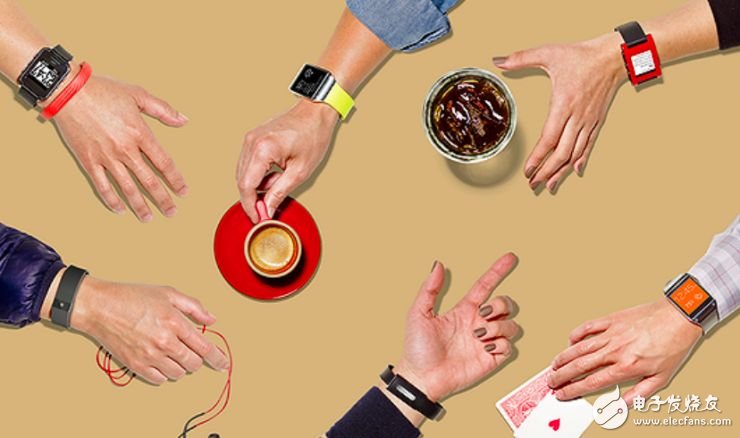Yu Wenjie, general manager of Shanghai Oufu Communication Technology Co., Ltd. believes that smart wearable products based on NB-IoT technology have the characteristics of not relying on smart phones, strong endurance and no loss of data, and solve various current reliance on WiFi and Bluetooth communication means. Disadvantages.
The needs of independent terminals are clear, but off-the-shelf technology is not optimistic
Many users have said that they occasionally run or leave their seats, and smart watches connected with Bluetooth are turned into waste, so more and more users hope that watches can no longer rely on mobile phones.
Mr. Yu Wenjie said that smart wearable products will become independent terminals. The future smart wearable and IoT terminals must be Plug & Play (plug and play) independent terminals. Wearable products that rely on Bluetooth connectivity are not smart, and smart watches with stand-alone terminals (with SIM cards) are just needed.
The combination of payment and SIM card brings more convenience to users. For example, the bracelet has evolved into a more functional smart watch (positioning, calling, heart rate monitoring, step-by-step sleep health, etc. Compared to the bracelet, the function of the smart watch is more practical), in addition, the bank card + bus card + mobile SIM card = multi-card, Bluetooth NFC close-up + remote network recharge = more convenience, NFC payment + POS + bus + bank = more system payment.
Today's smart wearables and trackers are based on 2G and 3G, and power consumption is a big issue. These networks and chips are customized products for mobile phone applications. The application of mobile phones has become more high-speed, high-bandwidth LTE, causing technical bottlenecks such as large power consumption and large chip area for smart wearable products. With the gradual withdrawal of 3G and 2G networks, the development of smart wearable independent terminals is even more confused.
Low power consumption, small size, low speed, and low cost have become the demand for smart wearable communication technologies.

Smart wearable products require NB-IoT technology?
Compared with traditional IoT technologies such as Bluetooth and WIFI, NB-IoT technology has five advantages: large capacity, wide coverage, low power consumption, low cost and high stability.
Large capacity: NB-IoT has 50~100 times higher uplink capacity than 2G/3G/4G, which means that the same base station can use this technology to improve the access technology by 50~100 times compared with the existing wireless technology.
Wide coverage: NB-IoT increases the gain of 20dB compared to the original LTE connection, which is equivalent to a 100-fold increase in transmit power, so it is more penetrating and covers the underground garage.
Low power consumption: communication equipment energy consumption is closely related to data volume or rate, while NB-IoT focuses on small data volume and small rate applications, and can also introduce ultra-long DRX (discontinuous reception) power saving technology and PSM power saving technology, so that Power consumption is greatly reduced. The power consumption of the NB-IoT is only 1/10 of that of GSM.
Low cost: Due to low speed and low bandwidth, the required RF, PA and other requirements will be lower, and the cost for its chip will be significantly reduced. At the same time, since IoT can be directly deployed in GSM, UMTS, and LTE networks, existing base station multiplexing can also reduce deployment costs.
High stability: NB-IoT uses a separate 180KHz band, which does not occupy the voice and data bandwidth of the existing network, and can better ensure that the future IoT service and the traditional service can be stably performed at the same time.
“In June 2015, Huawei’s colleagues gave us a brief introduction to the NB-IoT situation. We went back and tried it without hesitation. We think this is a technology that is urgently needed for smart wearable devices (low power + independent terminal). At the meeting, Mr. Yu Wenjie also said that NB-IoT technology allows us to see hope: let the similar Xiaomi bracelet or Apple Watch products and mobile phones can be used independently, without relying on mobile phones, and may continue to use for more than 30 days. time.
The deep coverage technology makes the antenna of the wearable product simpler, and the small antenna in the wearable product can also achieve good results. In addition to being worn on people, the need for more application scenarios such as positioning and tracking is also very clear.
Finally, Yu Wenjie said: We will spare no effort to be the pioneer of NB-IoT smart wearable and tracker Tracker. Consumers such as consumer electronics and medical products, pets, and object tracking can add emotional factors in these applications that allow users to put in consumption and increase APU values. The replacement of these products further promoted the sales of NB-IoT products, which ultimately reduced the cost of NB-IoT, making the development of NB-IoT products easier.
Geared Stepper Motor,Planet Gearbox,Spur Gearbox,Nema23 Geared Electric Motor
Changzhou Sherry International Trading Co., Ltd. , https://www.sherry-motor.com